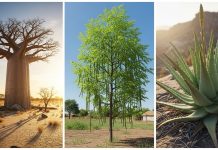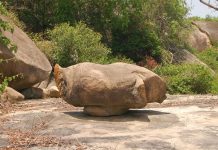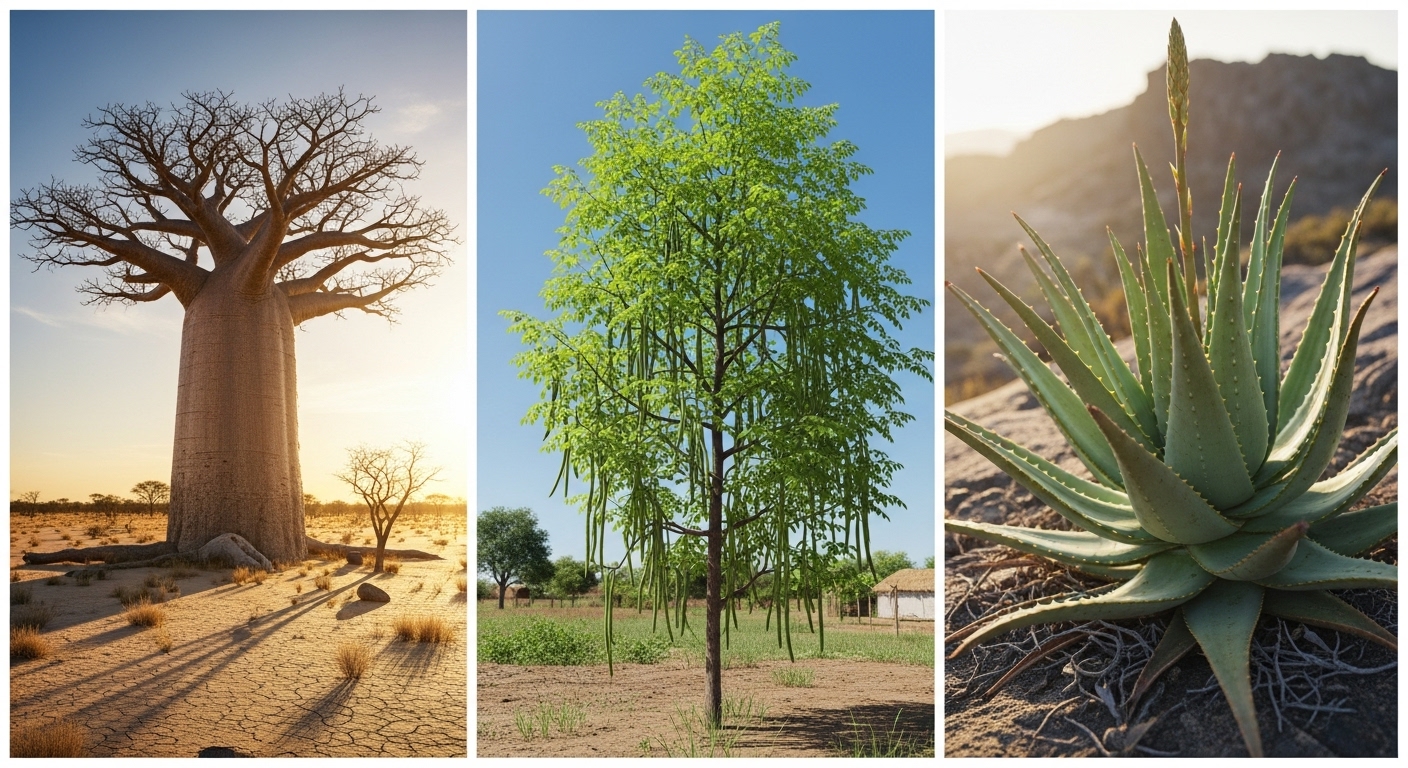When we think of survival in harsh environments—heat, drought, disease—few things are more impressive than the plants that thrive across Africa’s diverse landscapes.
For centuries, African communities have relied on native plants for food, medicine, water, and as a source of protection. Today, scientists are catching up to what traditional healers and farmers have known all along: these plants are potent.
Baobab: The Tree That Holds Water Like a Tank
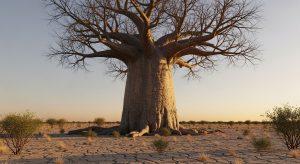
Known as the “Tree of Life,” the baobab (Adansonia digitata) is a true African icon.
Why it’s incredible:
- Its massive trunk can store up to 120,000 liters of water to survive dry seasons.
- The leaves, bark, seeds, and fruit are all useful.
- The baobab fruit is rich in vitamin C, calcium, potassium, and antioxidants, earning it the title of a “superfood” worldwide.
Where it grows: Found across sub-Saharan Africa, especially in the Sahel, savannas, and Madagascar.
Traditional uses:
- Treating fevers, diarrhea, and skin infections
- Making nutritious porridge or juice
- Weaving ropes and fabric from the bark
Moringa: The Miracle Tree You Can Eat from Root to Leaf
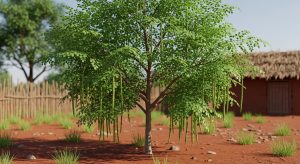
Moringa (Moringa oleifera), often called the “drumstick tree” or “miracle tree,” grows easily in dry climates and is a nutritional powerhouse.
Why it’s incredible:
- The leaves contain all nine essential amino acids, a rarity among plants.
- It’s rich in iron, protein, calcium, and vitamin A.
- Drought-resistant and grows fast.
Where it grows: Northern Nigeria, Niger, Kenya, and throughout East and West Africa.
Traditional uses:
- Leaf powder as a nutritional supplement
- Seed oil for skincare
- Treating malnutrition and high blood pressure
- Purifying water using crushed seeds
Aloe Ferox: Africa’s Healing Succulent

Cousin to the popular aloe vera, Aloe ferox is a spiky desert plant native to Southern and Eastern Africa. It thrives in poor soils and harsh sun.
Why it’s incredible:
- Stores water in its thick, fleshy leaves — drought doesn’t bother it.
- Used in traditional medicine and now modern cosmetics.
Medicinal benefits:
- Treats wounds, burns, and digestive problems
- Acts as a laxative
- Used in skin creams and detox juices
Where it grows: South Africa, Lesotho, and dry regions of East Africa
Bitter Kola: Nature’s Energy Booster and Infection Fighter
Called “Orogbo” in Yoruba and “Aki ilu” in Igbo, bitter kola (Garcinia kola) has been chewed for centuries as a stimulant and medicinal plant.
Why it’s incredible:
- Has antibacterial, antiviral, and anti-inflammatory properties
- Said to boost energy
- Helps relieve coughs and sore throats
Traditional uses:
- Treating chest colds and infections
- Modern research is exploring its use against respiratory viruses
Desert Date (Balanites aegyptiaca)
This tough tree grows in deserts and semi-arid lands, where almost nothing else can survive.
Why it’s incredible:
- Produces edible fruits and seeds even in extreme drought
- Seeds contain oil used for cooking and cosmetics
- Leaves are used to treat wounds and fevers
Where it grows: Sahel region — from Senegal to Sudan
Local knowledge: Communities use it for everything from cooking oil to fencing and medicine.
Traditional Knowledge Meets Modern Science
Many of these plants were once dismissed as “folk medicine,” but now scientists are confirming their value.
- Universities and research labs are investigating how moringa helps combat malnutrition.
- Baobab extract is sold globally in smoothies and supplements.
- Pharmaceutical companies are testing bitter kola and aloe for potential use in modern medicines.
The future of African plant knowledge lies in the fusion of science, culture, and sustainable conservation.
Why It Matters
These plants do more than heal; they represent survival, resilience, and the brilliance of African ecosystems. In the face of climate change, food insecurity, and desertification, they offer tools for a sustainable future.







